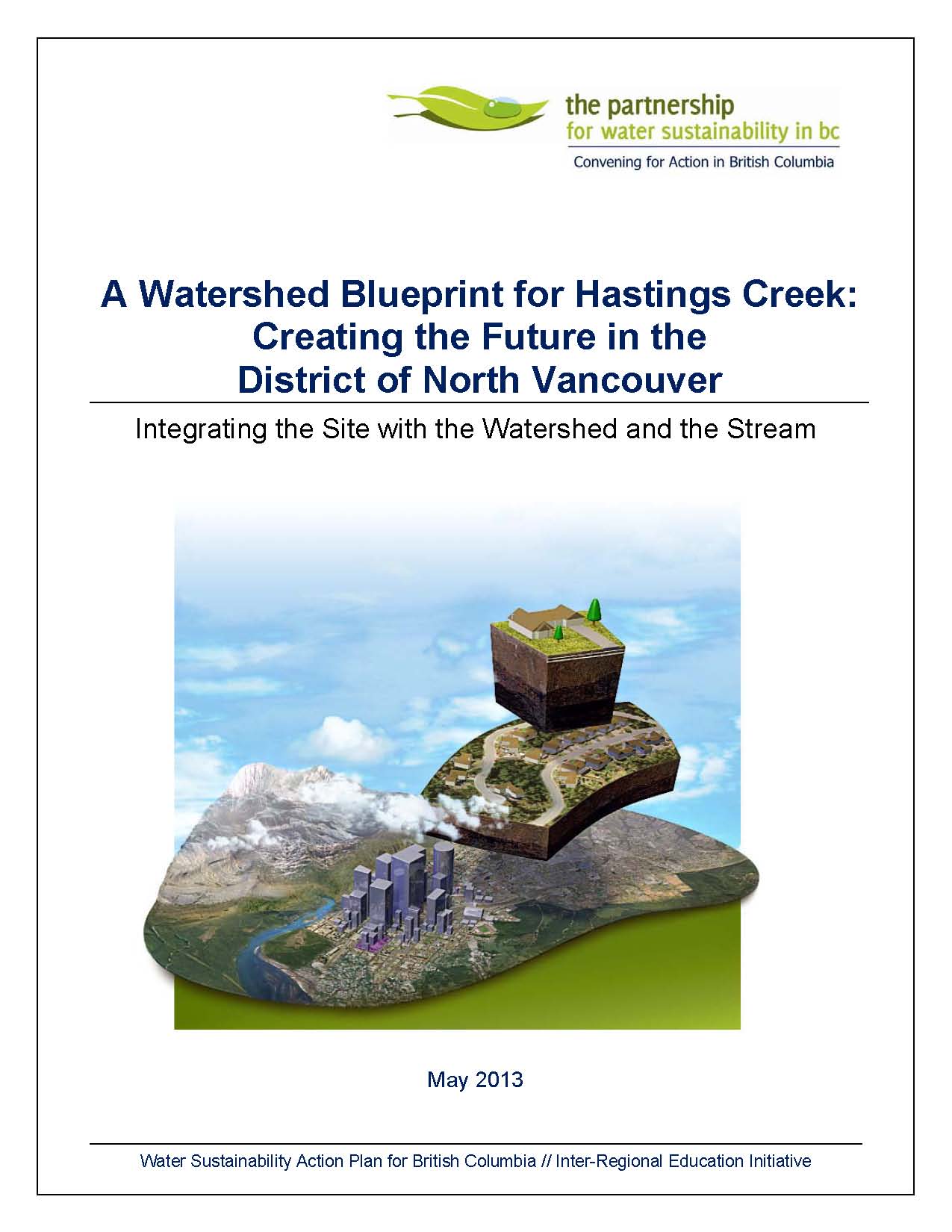A Watershed Blueprint for Hastings Creek: Creating the Future in the District of North Vancouver

Hastings Creek co-champions: Richard Boase (L), Environmental Protection Officer, and Ariel Estrada (R), Project Engineer
North Vancouver is a ‘Champion Supporter’ of the Partnership for Water Sustainability in BC
The Champion Supporter designation recognizes organizations that are playing a leadership role in the ‘Convening for Action in British Columbia’ initiative. Last night, the Partnership for Water Sustainability in BC presented a framed “letter of recognition” to District of North Vancouver Council; and highlighted why the District’s Hastings Creek Watershed Blueprint is innovative and provincially significant.
Richard Boase and Ariel Estrada are the Hasting Creek Watershed Blueprint co-champions. Richard is the District’s Environmental Protection Officer; and Ariel is the Project Engineer responsible for drainage infrastructure. Their long-term working relationship has built the foundation for an on-the-ground understanding of what is needed to restore watershed and stream health, what is possible and how to implement change.
“We started to collaborate on projects over a decade ago,” recalls Ariel Estrada. “It all started with a simple culvert replacement project. We concluded that my technical engineering responsibilities and Richard’s role in environmental protection needed to complement each other. We immediately started to learn from each other. We gained an appreciation for each other’s challenges and have walked in each other’s shoes ever since.”
Integration of Engineering, Planning and Environmental Perspectives
“We always look for ways to do a better job, apply technology effectively and efficiently, and save the District money. This is the philosophy that we have brought to the Hastings Creek Blueprint,” stresses Richard Boase.
“Our watershed-based approach captures the stewardship ethic which is deeply rooted in the North Vancouver community. In our jobs, Ariel and I deal with the unintended consequences of changes in land use. A key goal in problem-solving is striving to balance environmental protection and sustainability with community drainage and flood protection.”
“Through an evolving process of integrating interdisciplinary perspectives, we are planning habitat and watershed enhancements that can be realized through the redevelopment process,” concludes Ariel Estrada.
To Learn More:
To download a copy of the “Story of Hastings Creek”, click on A Watershed Blueprint for Hastings Creek: Creating the Future in the District of North Vancouver.
 “The Hastings Creek story is the first in a series of Watershed Blueprint Case Profiles that the Partnership is releasing. These will inform inter-regional collaboration among local governments in BC. We anticipate that sharing experiences will accelerate effective watershed restoration and/or protection within participating regions,” states Tim Pringle, Partnership President.
“The Hastings Creek story is the first in a series of Watershed Blueprint Case Profiles that the Partnership is releasing. These will inform inter-regional collaboration among local governments in BC. We anticipate that sharing experiences will accelerate effective watershed restoration and/or protection within participating regions,” states Tim Pringle, Partnership President.
“The Hastings Creek Watershed Blueprint is important to the Partnership because the District of North Vancouver has demonstrated the value of two new web-based tools, namely: the Drainage Infrastructure Screening Tool; and Water Balance Model Express for Landowners. Use of these tools can help all local governments go farther, more efficiently and effectively, to achieve watershed goals,” concludes Tim Pringle.


